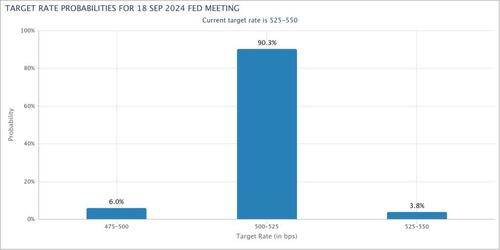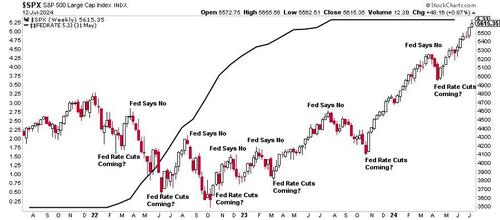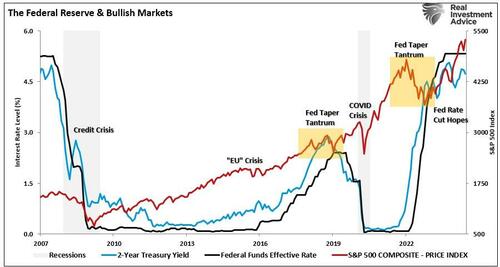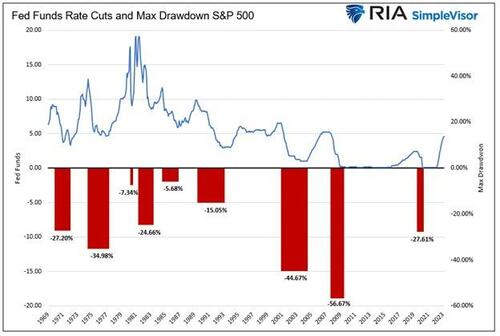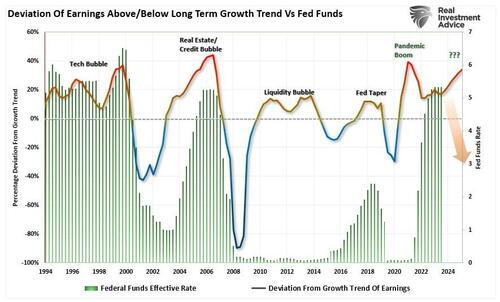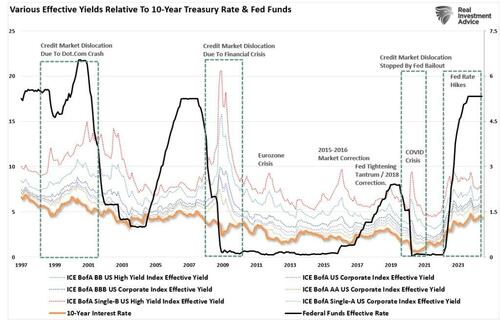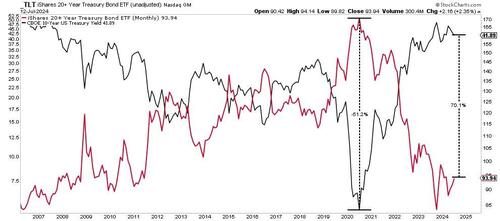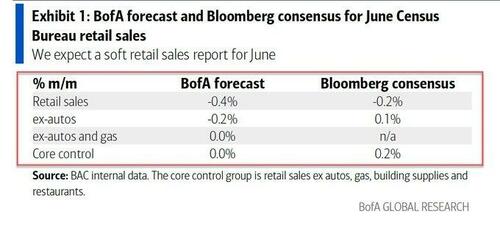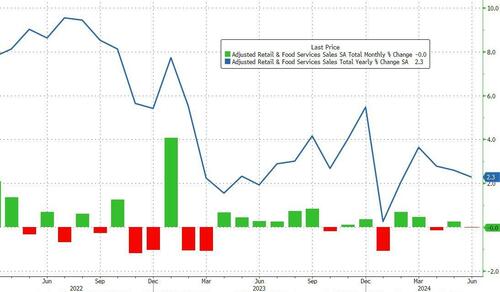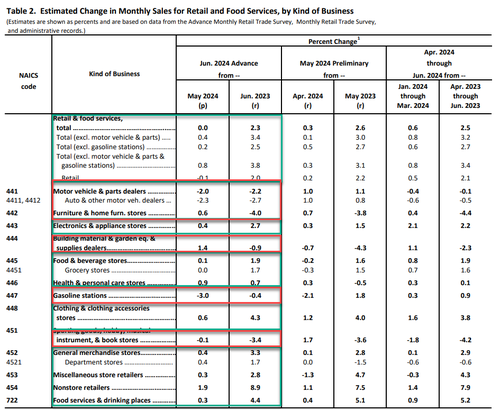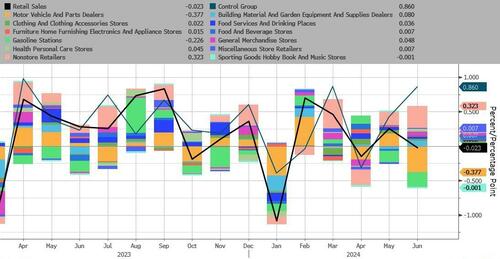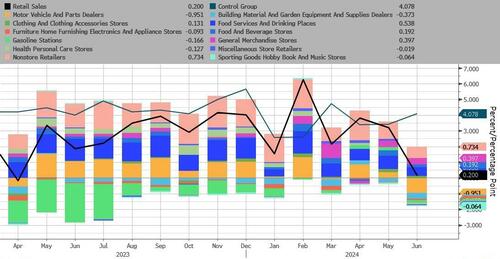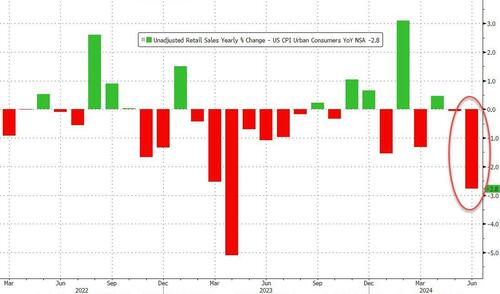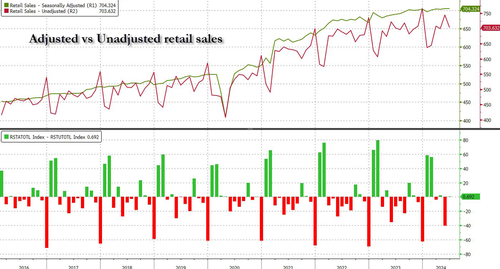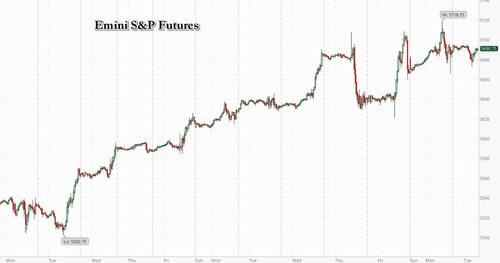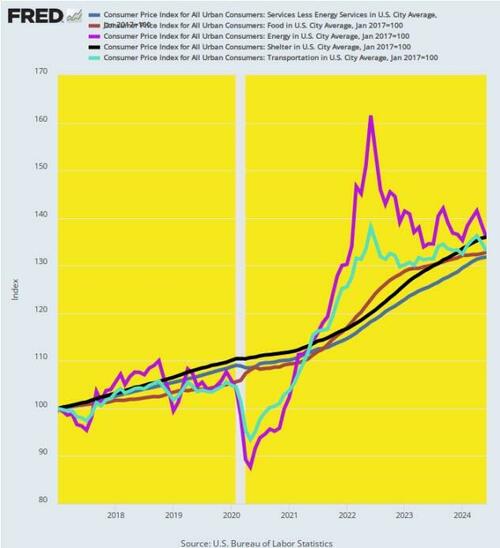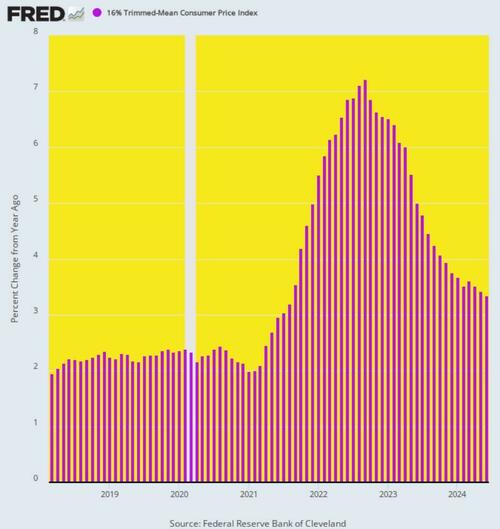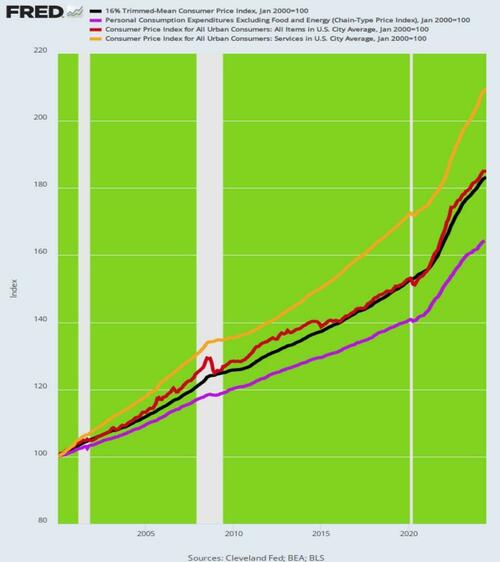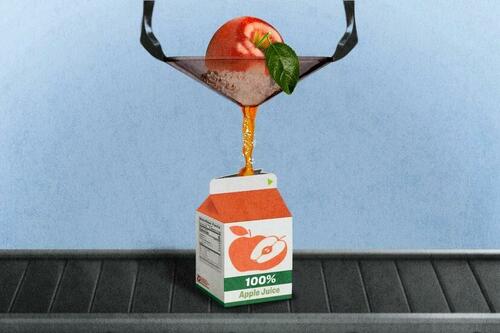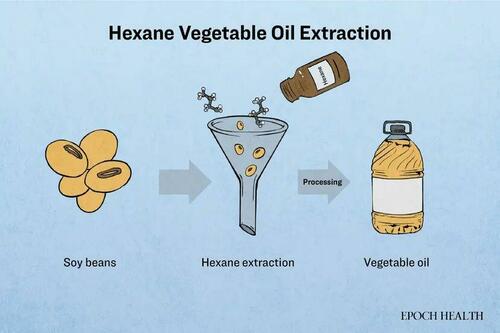Authored by Joseph Lord and Jackson Richman via The Epoch Times,
On July 15, former President Donald Trump announced that Sen. J.D. Vance (R-Ohio) was his vice presidential pick, ending months of speculation.
“After lengthy deliberation and thought, and considering the tremendous talents of many others, I have decided that the person best suited to assume the position of Vice President of the United States is Senator J.D. Vance,” former President Trump said in a Truth Social post.

Based on Mr. Vance’s published works and interviews, here are 39 things to know about the Ohio Republican who is set to share a ticket with the former president.
1. He’s 39 Years Old
Mr. Vance was born on Aug. 2, 1984. Turning 40 in August, he’s the first millennial on a major party ticket and one of the youngest vice presidential candidates in history.
2. He’s a Catholic
Mr. Vance was raised Protestant, but later converted to Catholicism, officially becoming Catholic in August 2019.
3. He’s Married to Usha Chilukuri Vance
Mr. Vance is married to Usha Chilukuri Vance, whom he met at Yale Law School. They married in 2014.
Ms. Vance currently works as a corporate litigator. She has clerked for Supreme Court Chief Justice John. Roberts and then-appellate Judge Brett Kavanaugh.
She would be the first Hindu spouse of a vice president.
4. The Couple Has 3 Children
Mr. Vance has three children: Ewan, 6, Vivek, 4, and Mirabel, 2.
5. He’s Considered a Populist Conservative
Mr. Vance is commonly considered to be a populist conservative.
His political ideology is often placed alongside the ranks of former President Trump, Sen. Josh Hawley (R-Mo.), and pro-Trump swaths of the House Freedom Caucus.
In a December 2023 interview, he described his hope to “push the Republican Party in a more pro-worker direction” and capitalize on the working-class gains made by the likes of former President Trump.
6. He Grew Up in a Lower-Class Family
Mr. Vance famously grew up in a lower-class family in Middletown, Ohio, and often experienced financial and familial hardships growing up.
7. He’s a Best-Selling Author
Mr. Vance first became well-known for his best-selling memoir, “Hillbilly Elegy,” published in 2016, which details his time growing up in poverty-stricken areas of the Rust Belt.
The book traces the drug abuse issues and financial hardships experienced by many in the white working class, and was seen by many as a primer on the population that propelled former President Trump to victory in 2016.
8. There’s a Movie Adaptation of His Book
Mr. Vance’s book was adapted into a namesake Netflix film in 2020.
9. He Experienced the Decline of the Rust Belt
In both his memoir and the movie adaptation, Mr. Vance explains his experience of the decline of the Rust Belt, and the impacts it had on those living there.
Speaking about his native Middletown, Mr. Vance wrote in Hillbilly Elegy, “There is a lack of agency here— a feeling that you have little control over your life and a willingness to blame everyone but yourself.”
He’s made clear that this experience has continued to shape his political life and decisions.
10. He Grew Up in Ohio but Considered Eastern Kentucky ‘Home’
Despite growing up in Ohio, Mr. Vance has said he considered his great-grandmother’s house in rural Kentucky as “home.”
“I always distinguished ‘my address’ from ‘my home,’” Mr. Vance wrote in Hillbilly Elegy.
“My address was where I spent most of my time with my mother and sister, wherever that might be. But my home never changed: my great-grandmother’s house, in the holler, in Jackson, Kentucky.”
11. His Parents Divorced When He was a Toddler
Mr. Vance’s parents, Donald Bowman and Bev Vance, divorced when he was very young, leaving Mr. Vance to be raised by his mother.
In “Hillbilly Elegy,” Mr. Bowman is described as having been largely absent from Mr. Vance’s life, though the two reconnected later in life.
Mr. Vance says both of his parents struggled to maintain stability in their employment, both largely worked a series of odd jobs over the years.
12. His Original Surname Was Bowman
At birth, Mr. Vance was named James Donald Bowman.
Later, Mr. Vance temporarily took on his stepfather’s surname, Hamel.
Eventually, he settled on Vance, which belonged to his mother and grandparents.
13. His Mother Suffered From Substance Abuse Issues
Mr. Vance in his book recounts in detail his mother’s struggles with opioid addiction, including heroin.
Mr. Vance notes that this is a familiar tale in Appalachia and the Rust Belt more broadly, with widespread pervasive hopelessness having become the norm for many.
His mother’s struggles with addiction shaped his childhood, contributing to an often-fractious home life.
14. He Lived With His Grandmother
The struggles of home life, compounded by his mother’s struggles with drug addiction, eventually led to Mr. Vance living with his grandmother.
His grandparents, James “Papaw” Vance and Bonnie “Mamaw” Vance, moved to Kentucky, unmarried and with child, in the 1940s, but ultimately divorced. They remained on good terms.
In his memoir, Mr. Vance credits his time living with his grandmother while he was in high school with helping him to commit to his studies and, ultimately, escape the poverty he grew up in.
15. His Grandparents Were Democrats
Like many in the Rust Belt of the late 20th century, Mr. Vance’s grandparents were pro-union Democrats.
Mr. Vance describes their attitude toward politics in “Hillbilly Elegy,” writing, “All politicians might be crooks, but if there were any exceptions, they were undoubtedly members of Franklin Delano Roosevelt’s New Deal coalition.”
Mr. Vance said the exception was 1984, when his grandfather voted for President Ronald Reagan.
16. He’s a Marine Corps. Iraq Combat vet
Mr. Vance served in Iraq as a Marine combat correspondent during the mid-2000s.
17. He Has a Dual Undergrad Degree From Ohio State University
Mr. Vance has a dual undergraduate degree in political science and philosophy from Ohio State University. He graduated summa cum laude in 2009.
18. He Earned a J.D. From Yale Law School
Mr. Vance earned a juris doctorate from Yale Law School in 2013. While there, he met law professor Amy Chua, who persuaded him to write his memoir. Ms. Chua is known for her own best-selling memoir “Battle Hymn of the Tiger Mother.”
19. He Was an Editor of the Yale Law Journal
While studying law, Mr. Vance served on the editorial staff of the Yale Law Journal.
20. He’s Close With Peter Thiel
After graduating from Yale Law School, Mr. Vance worked at the law firm Sidley Austin LLP before joining billionaire Peter Thiel’s Mithril Capital in San Francisco.
Mr. Thiel later spent more than $10 million in support of Mr. Vance during his 2022 Senate run.
21. He Was a Venture Capitalist
Mr. Vance started Narya, based in Ohio, an “early-stage venture capital firm focused on using technology and science to solve for the future,” according to its website.
22. He’s Sponsored Programs to Combat Drug Addiction
In 2016, Mr. Vance left California and returned to Ohio, where he helped launch an effort to combat opioid abuse in the state.
Called “Our Ohio Renewal,” the project was short-lived, and the online domain for the website is no longer accessible.
23. He Was a CNN Contributor
Mr. Vance was a contributor for CNN back in 2017.
“This will be the first ever CNN commentator ever put on a presidential ticket,” CNN anchor Jake Tapper said on the air following the announcement of the pick.
24. He Wasn’t Always Pro-Trump
Years before being a staunch ally of former President Trump, Mr. Vance wrote an op-ed in the New York Times in which he called the former president “unfit for our nation’s highest office.”
25. His Views Evolved After Trump Took Office
Since 2016, Mr. Vance said his views on the former president have changed, and he’s recanted his statements from 2016.
The reason for this, he said, was seeing how former President Trump handled the job.
In a May interview with CNN, he told anchor Dana Bash, “I didn’t think he was going to be a good president, Dana, and I was very, very proud to be proven wrong. It’s one of the reasons why I’m working so hard to get him elected.”
26. He Voted for Trump in 2020
Given how his views had changed in the four years since 2016, Mr. Vance voted for President Trump in 2020.
27. He Won a Tough Primary in a Crowded Field
Mr. Vance won the 2022 GOP Senate primary amid a crowded field in Ohio to succeed retiring Sen. Rob Portman (R-Ohio).
Boosted by former President Trump’s endorsement, he defeated former Ohio Treasurer Josh Mandel and Ohio state Sen. Matt Dolan.
28. He Was Donald Trump Jr.’s Pick
Mr. Vance developed a relationship with former President Trump’s oldest son during his 2022 Senate campaign, when the younger Trump campaigned for him.
Since then, Mr. Trump has signaled that he favored Mr. Vance in the “veepstakes.”
In a recent podcast episode, Mr. Trump said, “everyone knows, I’ve sort of been for J.D. Vance.”
29 He’s Been in the Senate Since January 2023
Mr. Vance has been in politics just over a year and a half, joining the Senate—his first political office—in January 2023.
30. He Has a Conservative Voting Record
Since joining the Senate, Mr. Vance has regularly voted with the most conservative wing of the Senate Republican conference on an array of key issues, from foreign aid to government finance.
The political arm of the conservative think tank the Heritage Foundation rates Mr. Vance as voting with conservative positions 93 percent of the time.
31. He Has Worked Across the Aisle on Legislation
Mr. Vance has shown a willingness to work with Democrats on some major pieces of legislation.
He and Sen. Sherrod Brown (D-Ohio) co-sponsored a rail safety bill following the derailment in East Palestine, Ohio. He also worked with Sen. Elizabeth Warren (D-Mass.) on a bill to claw-back executive pay from large failed banks.
Neither of the bills has advanced to a vote on the Senate floor.
32. He Serves on 3 Senate Panels
In the Senate he serves on the Banking, Housing, and Urban Affairs Committee; the Commerce, Science, and Transportation Committee; and the Special Committee on Aging.
33. He Has a Hold on All DOJ Appointments
In June 2023, Mr. Vance announced that he would use his power as a senator to place holds on all future nominees to the Department of Justice.
He cited the department’s prosecutions against the former president as the reason for the hold.
34. He Wants Abortion Left to the States
Mr. Vance has indicated he supports leaving abortion to the states.
He said that former President Trump’s “leave it to the states approach” is “pragmatic,” and endorsed the Supreme Court decision allowing mifepristone to continue being shipped.
In 2022, Mr. Vance expressed support for Sen. Lindsey Graham’s (R-S.C.) 15-week abortion ban.
In an interview that same year, Mr. Vance said, “I’d like it to be primarily a state issue.”
35. He Spoke in Support of the 2023 United Auto Workers Strike
Mr. Vance has spoken supportively of the 2023 United Auto Workers strike.
Elsewhere, he’s said he supports collective bargaining “as an abstract matter.”
36. He’s Critical of the Iraq War
Though he served in the Iraq War, Mr. Vance has since been critical of the conflict, saying he made a “mistake” in initially supporting it.
“I served my country honorably, and I saw when I went to Iraq that I had been lied to, that the promises of the foreign policy establishment of this country were a complete joke,” he said on the Senate floor in April.
37. Critical of Ukraine Aid
Mr. Vance has been critical of continued U.S. support for the war in Ukraine.
Since taking office, he’s voted against every Ukraine aid package that’s come to the floor. He’s called for Europe to bear the brunt of financing the war.
Mr. Vance wrote in an April op-ed for The New York Times that the current trajectory of the war is unsustainable for either the U.S. or Ukraine. He said that the notion that Ukraine will reclaim all its land lost to Russia is “fantastical.”
38. Supports Israel Aid
Mr. Vance supports aid to Israel.
In a May 2024 speech at the Quincy Institute, Mr. Vance gave a contrast between supporting Israel and Ukraine.
With Ukraine, he said, there’s “no strategic end in sight” and that the Europeans are not doing their fair share. But Israel, he said, is “doing the most important work to give us missile-defense parity.”
He also opposed the 2015 Iran nuclear deal and applauded President Trump for withdrawing from it in 2018.
39. He Says US Focus Should Be on China
Mr. Vance has also taken a tough stance on China, encouraging the United States to focus its efforts there.
Between war in Ukraine, Israel, and Taiwan, Mr. Vance said, America has “to pick and choose” where it invests its resources.
“We should be focused on our own problems, and that’s mostly China,” Mr. Vance said in April.
“My argument is the Chinese are focused on real power. They’re not focused on how tough people talk on TV or how strong our alleged resolve is. They’re focused on how strong we actually are, and to be strong enough to push back against the Chinese, we’ve got to focus there, and right now, we’re stretched too thin.”
